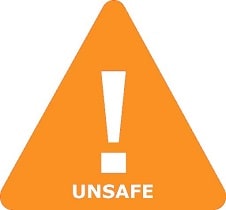Is Nebivolol Safe in Breastfeeding
Question
I am a breastfeeding mother and i want to know if it is safe to use Nebivolol? Is Nebivolol safe for nursing mother and child? Does Nebivolol extracts into breast milk? Does Nebivolol has any long term or short term side effects on infants? Can Nebivolol influence milk supply or can Nebivolol decrease milk supply in lactating mothers?
Nebivolol lactation summary

- DrLact safety Score for Nebivolol is 5 out of 8 which is considered Unsafe as per our analyses.
- A safety Score of 5 indicates that usage of Nebivolol may cause serious side effects in breastfed baby.
- Our study of different scientific research indicates that Nebivolol may cause moderate to high side effects or may affect milk supply in lactating mother.
- Our suggestion is to use safer alternate options rather than using Nebivolol .
- It is recommended to evaluate the advantage of not breastfeeding while using Nebivolol Vs not using Nebivolol And continue breastfeeding.
- While using Nebivolol Its must to monitor child for possible reactions. It is also important to understand that side effects vary largely based on age of breastfed child and time of medication in addition to dosage.
- Score calculated using the DrLact safety Version 1.2 model, this score ranges from 0 to 8 and measures overall safety of drug in lactation. Scores are primarily calculated using publicly available case studies, research papers, other scientific journals and publically available data.
Answer by Dr. Ru: About Nebivolol usage in lactation
No adverse effects have been reported, but check-up for the possibility of sedation, hypotension, hypoglycemia or bradycardia.
Answer by DrLact: About Nebivolol usage in lactation
Because no information is available on the use of nebivolol during breastfeeding, an alternate drug may be preferred, especially while nursing a newborn or preterm infant.
Alternate Drugs
Propranolol(Safe)
Carvedilol(Low Risk)
Bisoprolol(Low Risk)
Nadolol(Unsafe)
Metoprolol(Safe)
Atenolol(Unsafe)
Carteolol(Unsafe)
Nebivolol(Unsafe)
Acebutolol(Unsafe)
Timolol(Safe)
Levobunolol(Low Risk)
Sotalol(Low Risk)
Labetalol(Safe)
Torsemide(Low Risk)
Losartan(Low Risk)
Felodipine(Low Risk)
Minoxidil(Safe)
Propranolol(Safe)
Spironolactone(Safe)
Irbesartan(Unsafe)
Reserpine(Unsafe)
Enalapril(Safe)
Methyldopa(Safe)
Ramipril(Low Risk)
Carvedilol(Low Risk)
Eprosartan(Low Risk)
Diltiazem(Safe)
Bosentan(Low Risk)
Lisinopril(Low Risk)
Doxazosin(Safe)
Bisoprolol(Low Risk)
Chlorthalidone(Dangerous)
Nadolol(Unsafe)
Guanfacine(Low Risk)
Chlorothiazide(Safe)
Isradipine(Low Risk)
Nitrendipine(Safe)
Captopril(Safe)
Nebivolol(Unsafe)
Indapamide(Low Risk)
Metoprolol(Safe)
Bumetanide(Low Risk)
Atenolol(Unsafe)
Nisoldipine(Low Risk)
Hydrochlorothiazide(Safe)
Nicardipine(Safe)
Bendroflumethiazide(Unsafe)
Acebutolol(Unsafe)
Valsartan(Low Risk)
Nimodipine(Safe)
Benazepril(Safe)
Terazosin(Unsafe)
Hydralazine(Safe)
Timolol(Safe)
Verapamil(Safe)
Telmisartan(Unsafe)
Furosemide(Low Risk)
Levobunolol(Low Risk)
Nifedipine(Safe)
Amlodipine(Low Risk)
Prazosin(Unsafe)
Fosinopril(Low Risk)
Sotalol(Low Risk)
Trandolapril(Dangerous)
Labetalol(Safe)
Minoxidil(Safe)
Diltiazem(Safe)
Sildenafil(Safe)
Isradipine(Low Risk)
Nitrendipine(Safe)
Nebivolol(Unsafe)
Nitroglycerin(Safe)
Nisoldipine(Low Risk)
Nimodipine(Safe)
Nicardipine(Safe)
Hydralazine(Safe)
Verapamil(Safe)
Nifedipine(Safe)
Amlodipine(Low Risk)
Cinnarizine(Low Risk)
Felodipine(Low Risk)
